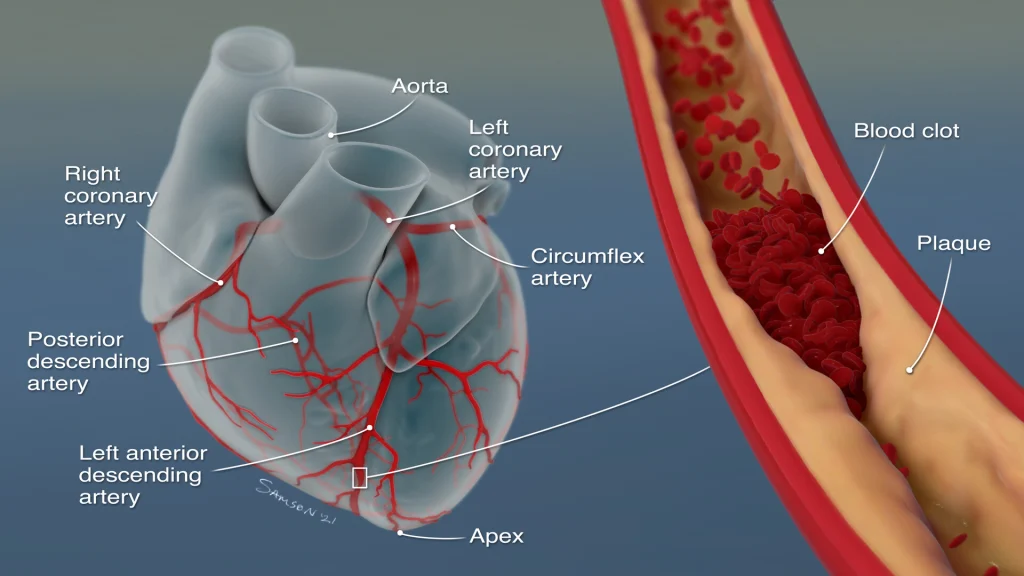No one thinks about the blood vessels in their neck. Why would they? If you can breathe, walk, talk, and eat normally, everything feels fine. But here’s the truth, your carotid arteries, the ones on both sides of your neck, might be silently narrowing. You wouldn’t know. There’s no warning bell. No headache. Maybe some dizziness if you’re lucky. Maybe not even that. That’s exactly why a duplex scan matters. It’s a simple, non-invasive way to see what’s going on inside those arteries, before symptoms ever appear.
At American Heart Center in Dubai, we’ve seen it too often. People feel completely normal until one day they don’t. A scan they never considered becomes the reason they avoid a stroke.
What Is This Test, Anyway?
It’s called a duplex scan of extracranial arteries. Doesn’t sound like much. But it gives us two layers of insight:
- What your arteries look like
- How your blood actually flows through them
Think of it like listening and watching at the same time, in real time.
It’s an ultrasound. No cuts. No injections. Just a small device pressed gently to your neck with a bit of cold gel. It reads the motion inside, maps the shape of the artery walls, and plays back the sound of your blood. The whole thing takes maybe 20–30 minutes.
Who Should Consider This?
Honestly? More people than you’d think. The scan isn’t just for someone recovering from a stroke. It’s for people who want to stay ahead of one.
You should ask about it if:
- You’ve ever had a mini-stroke (a TIA)
- You’re dealing with high blood pressure or diabetes
- You’ve smoked heavily, now or in the past
- Your doctor hears a strange sound in your neck (called a bruit)
- Stroke runs in your family
- You’re simply over 55 and health-conscious
Most people wait until something feels off. But the real value is when you catch the narrowing before it causes symptoms.

What Do We See in This Scan?
Sometimes, we find everything’s flowing fine. That’s great, no further steps needed.
Other times, we catch signs of:
- Narrowing arteries
- Plaque buildup (called atherosclerosis)
- Reduced blood velocity
- Early stroke risk indicators
That early discovery can shift everything. It means we can start medication, recommend lifestyle changes, or in rare cases, refer you for surgical options. But we only go there if the scan shows real concern.
What It’s Like, From a Patient’s View
You’re lying down in a quiet room. There’s no pain, no poking, no stress. Just a little pressure on your neck, a cool gel, and a sound like distant wind, that’s your blood moving.
You can breathe. You can talk. The whole experience feels low-pressure, in every sense.
After the scan, we sit down with you. We go over the findings. Not just technical terms. Real explanations, real options.
Why Early Matters So Much
The scary thing about strokes? They rarely give you time. When it hits, it hits. But the narrowing that causes it? That’s slow. Gradual. Years in the making.
A 25-minute scan could reveal what’s been building for a decade — without you ever knowing.
And when you know, you can act.
The American Heart Center Difference
We don’t treat people like chart numbers. Instead, we explain what’s happening in simple terms. Questions are welcomed, and answered thoroughly. Even when the clinic is busy, we take the time to slow down and focus on you. Because this isn’t just about scans. It’s about decisions. And decisions only work when you truly understand what’s going on inside your body.
Final Thought
Most people walk around thinking they’re fine, and they probably are. But that’s what people say until something changes. If you’re someone who likes to stay one step ahead, this test is one of the smartest moves you can make.
It’s easy. It’s safe. And it might quietly save your life.